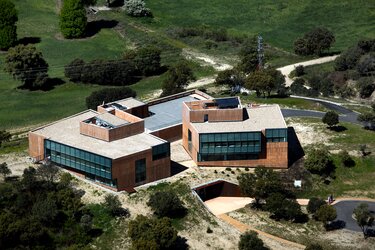SMOS Lead Investigator: interview with Jordi Font
Jordi Font was one of the scientists who contributed to establishing the ocean salinity requirements for SMOS. As Lead Investigator for ocean salinity, his role has been to maintain the scientific integrity of the mission as it went from a paper design to a real satellite.

Font, a Spanish national, received both his BSc and his PhD in Physics from the University of Barcelona in Spain. He is a Senior Researcher with the Department of Physical Oceanography at the Institut de Ciències del Mar and the Spanish Research Council (Consejo Superior de Investigaciones Cientificas) in Barcelona.
He also serves as Chairperson of the Physics and Climate of the Ocean committee for the International Commission for the Scientific Exploration of the Mediterranean Sea.
ESA: What role does ocean salinity play in the global water cycle, ocean circulation, and the climate system?
Jordi Font
Ocean salinity is the geophysical variable that links the global water cycle to ocean circulation. Since 86% of the total evaporation and 78% of total precipitation take place over the ocean, a very large portion of the global water cycle is influenced by the ocean dynamics. Salinity is modified through processes that increase or decrease the fresh water amount in the ocean surface, mainly precipitation and evaporation, but also river discharge as well as freezing and melting in polar regions. These changes in surface salinity are transferred to the deep ocean and spread to other regions by advection and diffusion mechanisms.
ESA: What do fluctuations in salinity levels tell us?
Jordi Font
Slight differences in dissolved salt content between the different water masses are sufficient to play a major role in ocean circulation. Salinity, together with temperature, determines seawater density. Density differences, together with the momentum input from surface winds, modify the pressure field in the whole ocean, even at great depths, which drives the ocean currents.
ESA: What are the challenges of measuring salinity in the world’s oceans?
Jordi Font
Ocean salinity is more difficult to measure than temperature. Until the 1960s it was necessary to take water samples and determine their salt content through chemical analysis in a laboratory. Electronic sensors are now able to measure in situ seawater conductivity that, together with temperature information, allows the salinity to be computed.
In large and remote ocean regions, very few salinity determinations were made in a century of oceanographic expeditions. Although recently, an international programme that deploys instruments via drifting floats has started to provide a consistent 3D description of the salinity field and its fluctuations. However, no satellite mission to date provides regular and high spatial resolution observations of ocean salinity, as has been achieved for sea surface temperatures for more than thirty years.
SMOS, with its sophisticated technical approach, is the first attempt to deliver this information. Measuring salinity with SMOS is a challenge because it requires high instrument performance in terms of accuracy and stability, and the entire range of ocean salinities is reflected in a relatively narrow range of radiometric values. Thus, it demands very complete and efficient algorithms to retrieve salinity from the satellite observations.
ESA: What fields of science will benefit most from ocean salinity data?
Jordi Font
Understanding how sea surface salinity varies will allow the scientific community to improve forecasting of events such as El Niño, which occurs in equatorial latitudes across the Pacific and can bring devastating weather to many parts of the world. Currently sea surface salinity data are not available to be assimilated into numerical models as is done with temperature and sea level data; this results in deficient forecasts.
We will also be able to study and understand better phenomena like the formation of dense water masses at high latitudes through interaction with the atmosphere, the evaporation minus precipitation balance in many ocean regions, and many other processes that will help improve our present knowledge of global hydrologic budgets and climate predictions at several temporal scales.
ESA: Where will you be for launch?
Jordi Font
I will be at ESAC, near Madrid, where the SMOS data processing Ground Segment has been installed, to share this moment, as Co-Lead Investigator, with several colleagues from ESA, the research community, industry and the Spanish authorities that have made a special effort to contribute to SMOS and earmark it as the first European satellite mission where Spain has played a fundamental role in the scientific, technological and industrial aspects.
Editor's note:
This is one in a series of interviews with a few of the key people involved in the SMOS mission. Please check back, as the list will be added to over the coming weeks.




